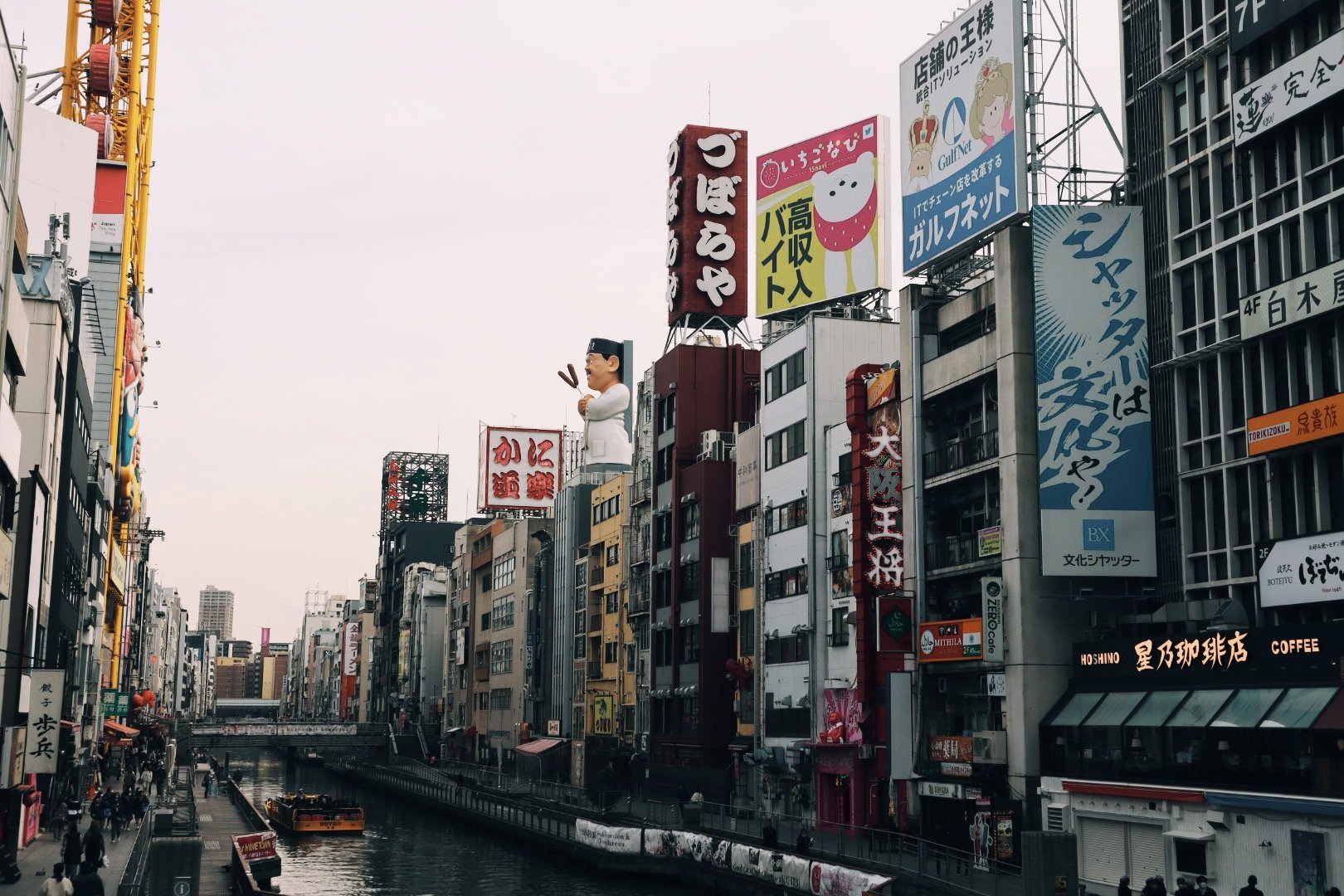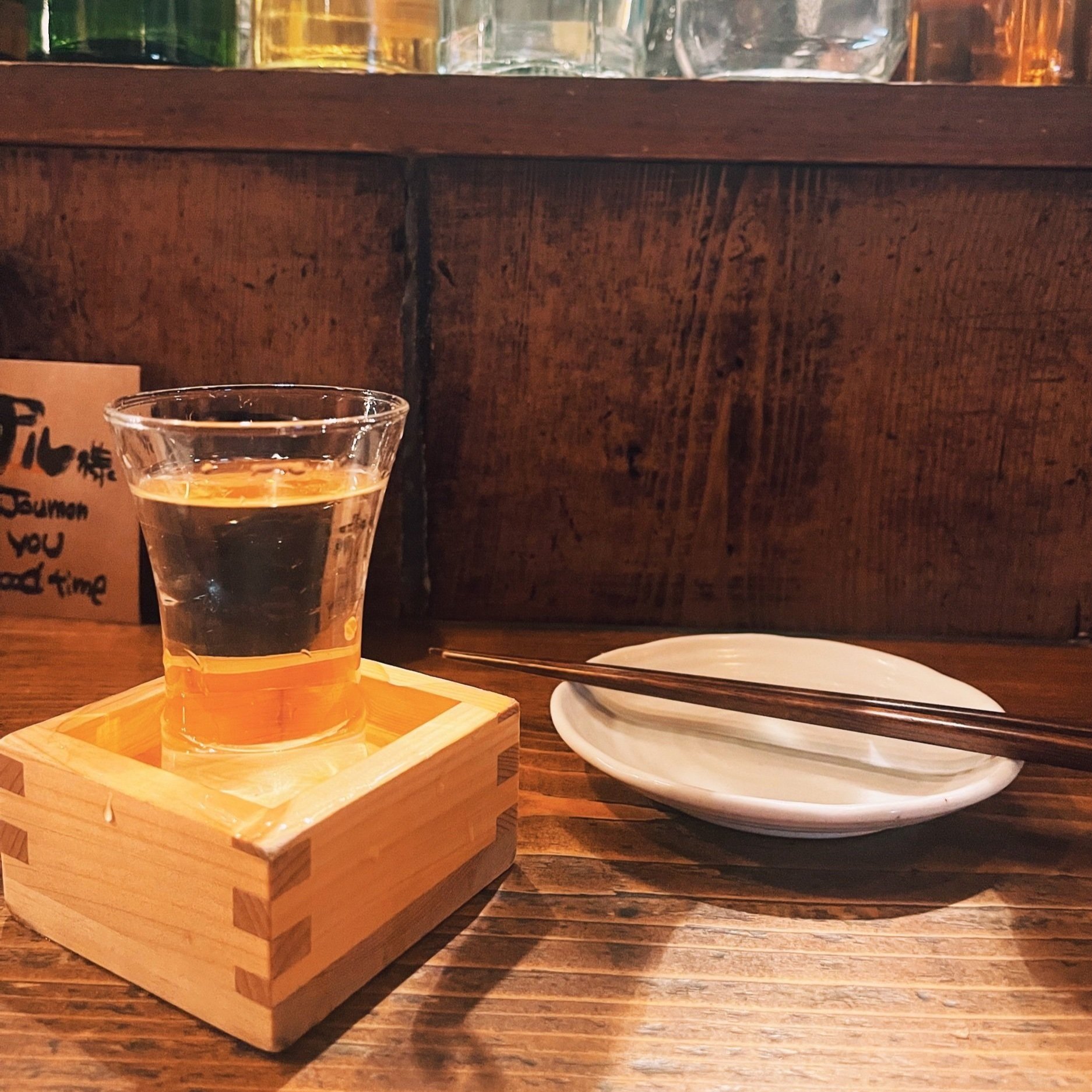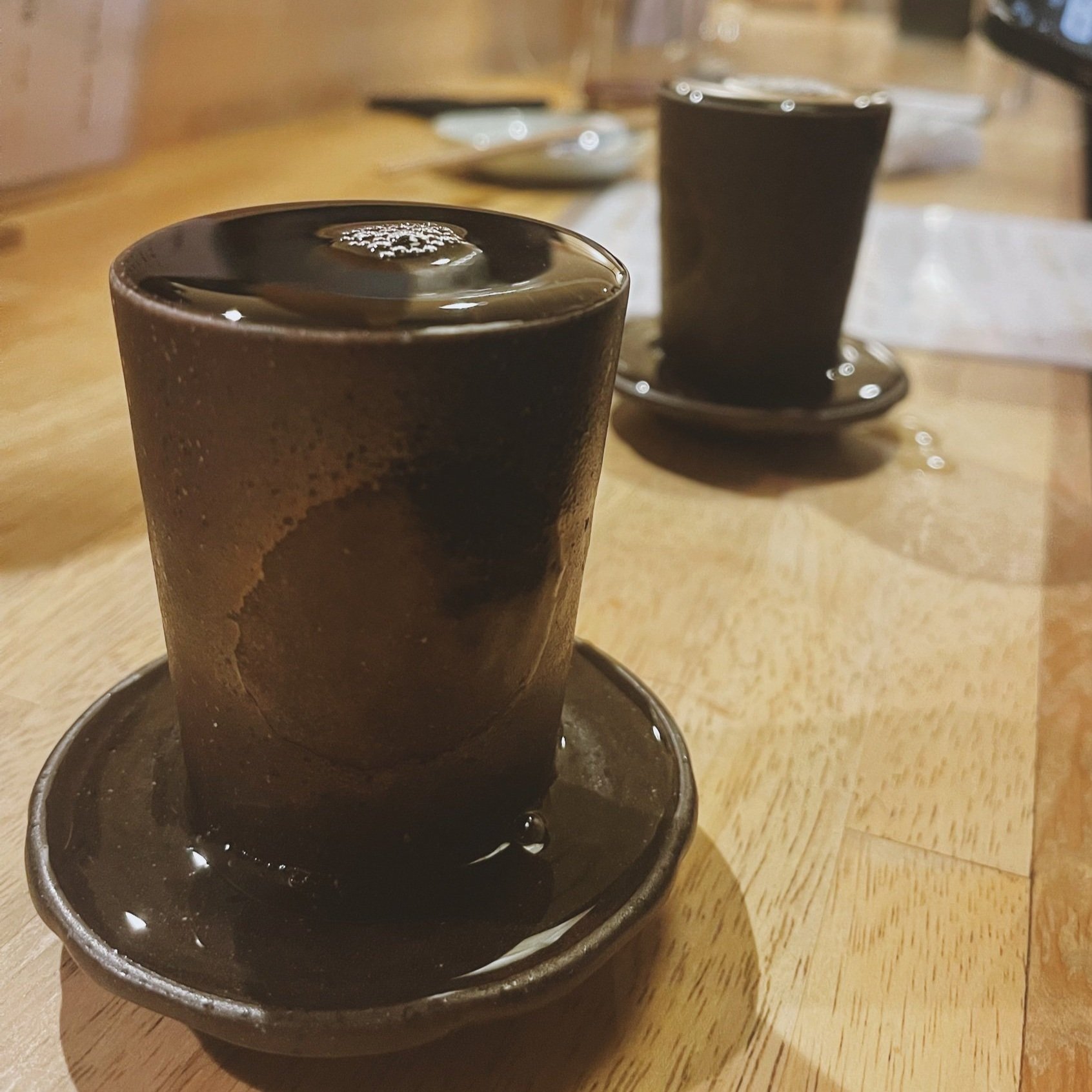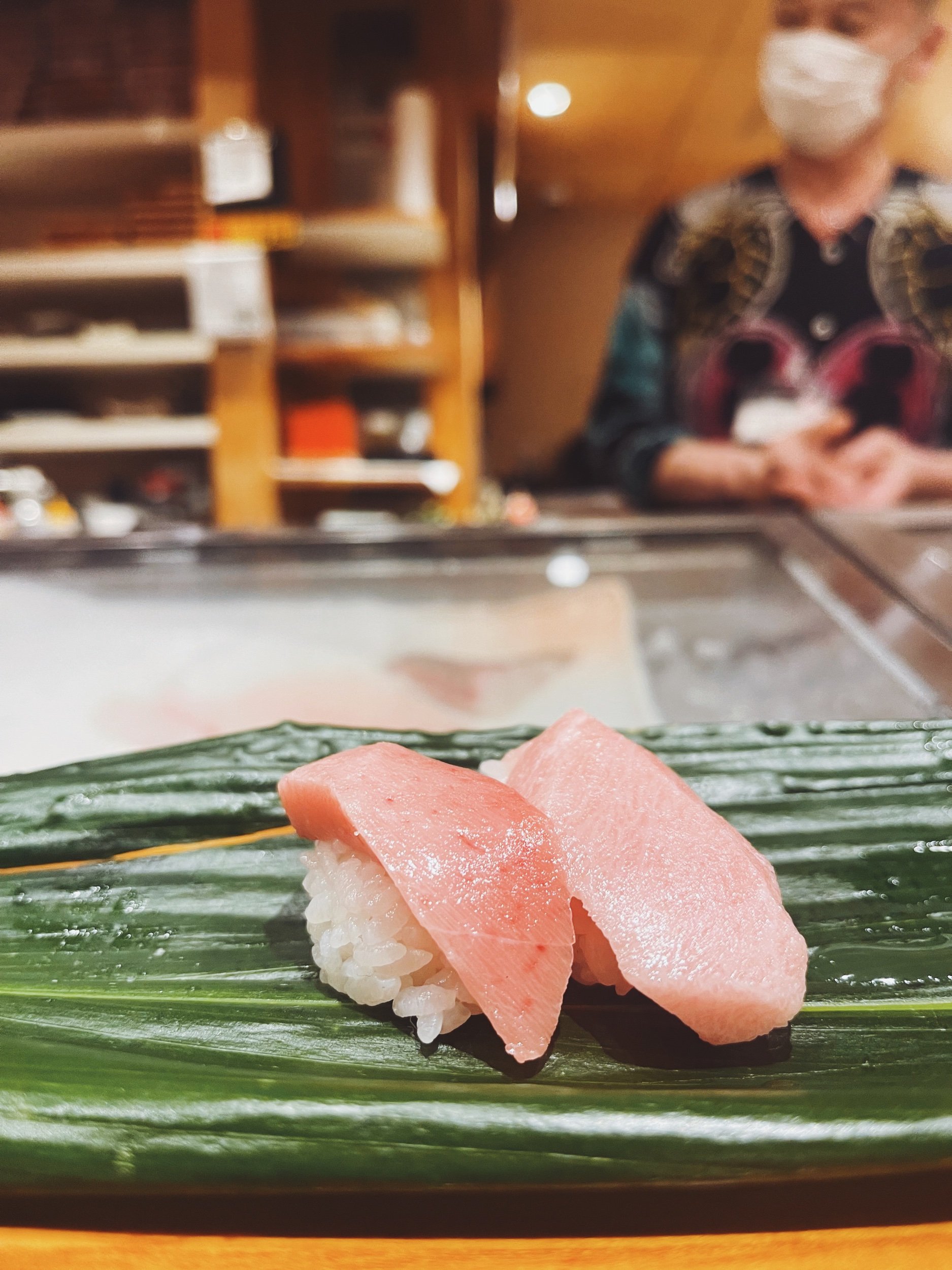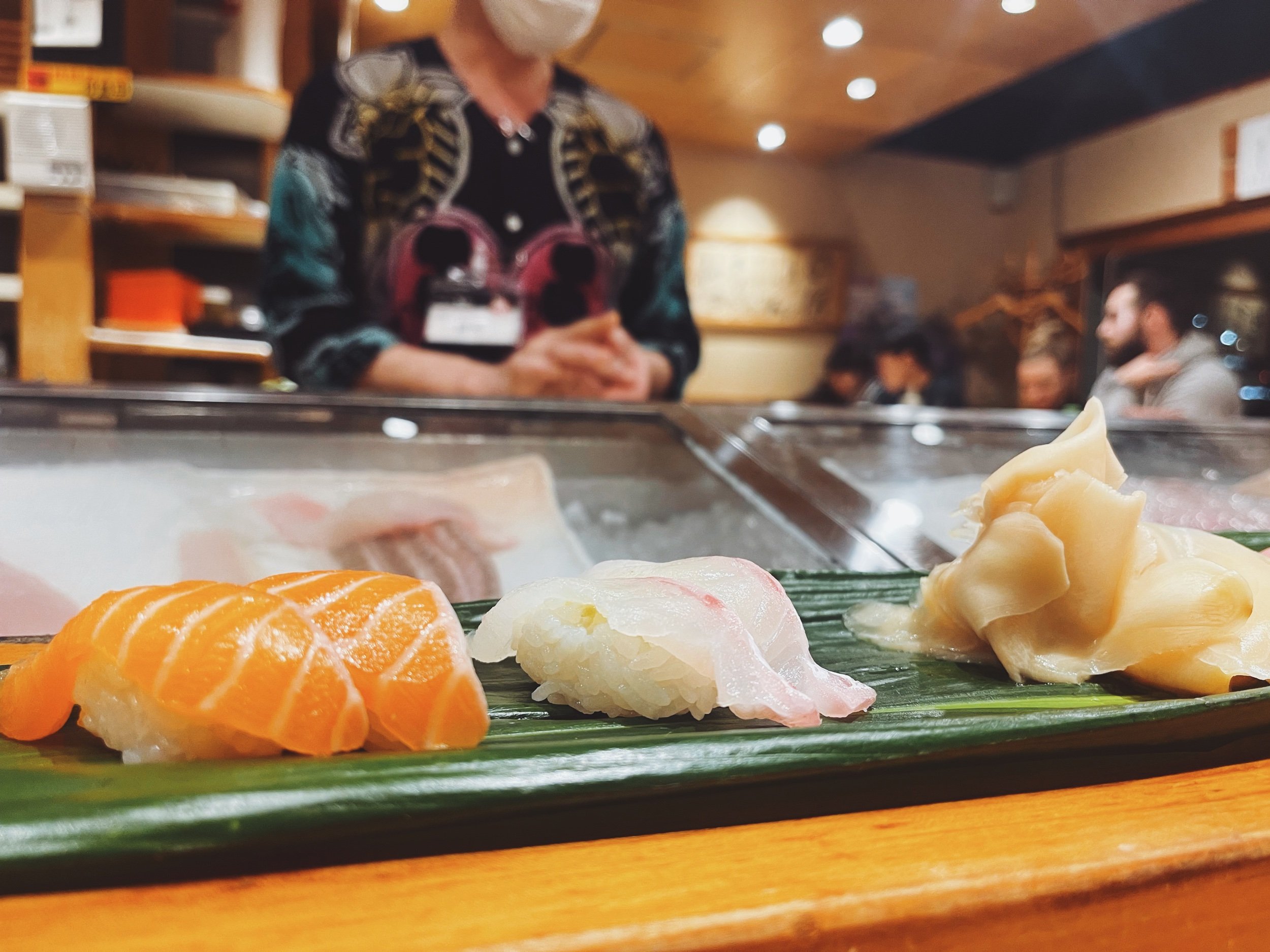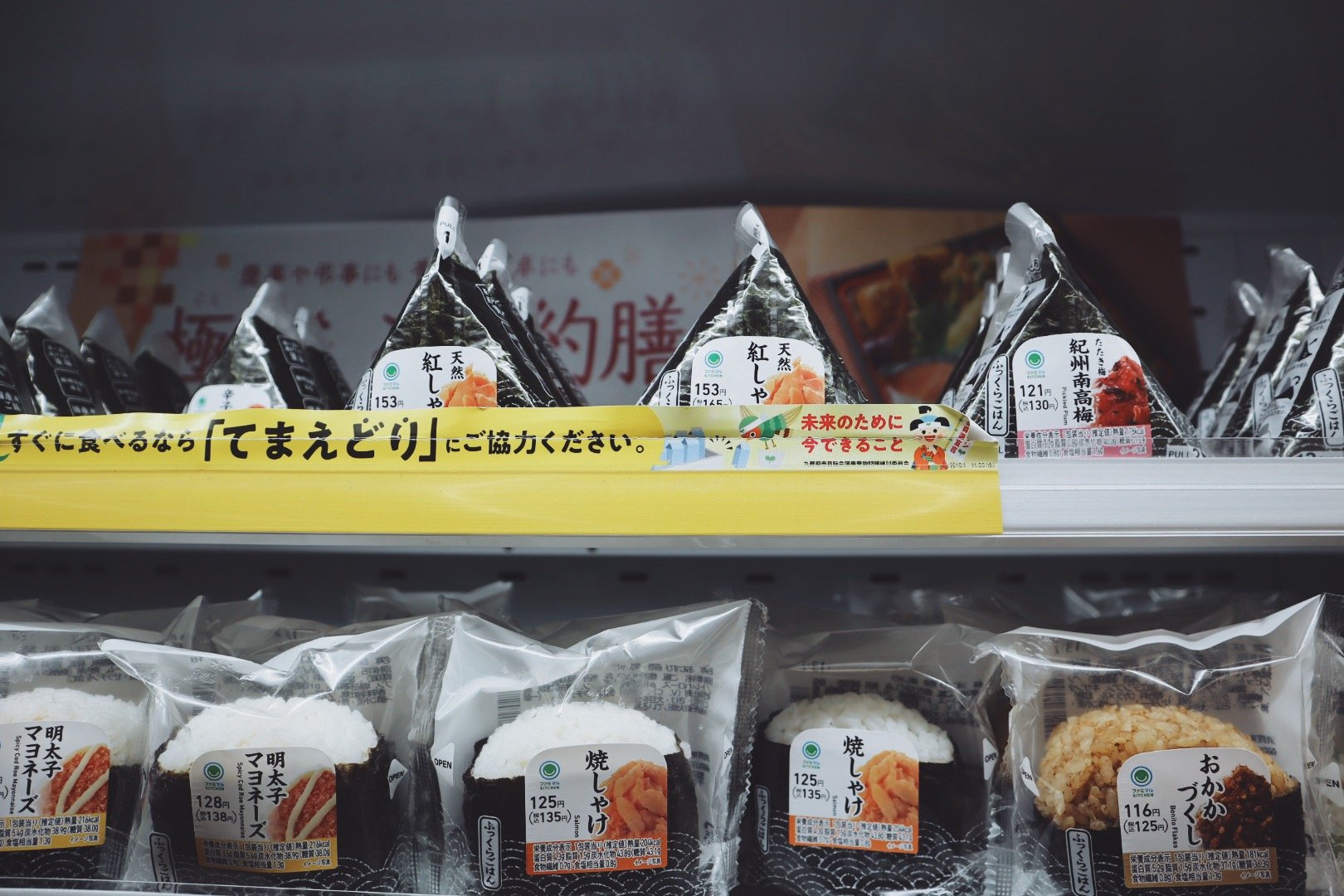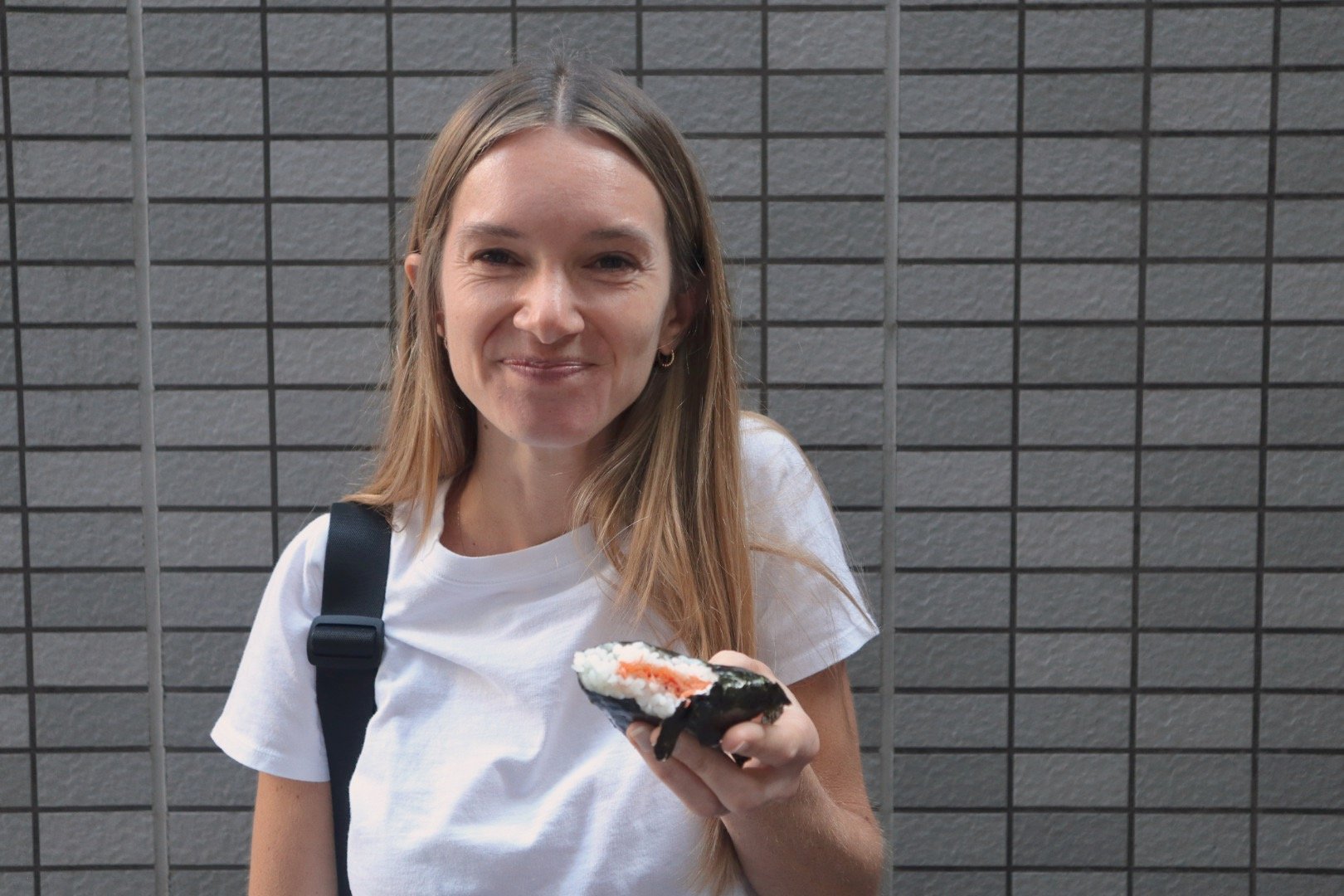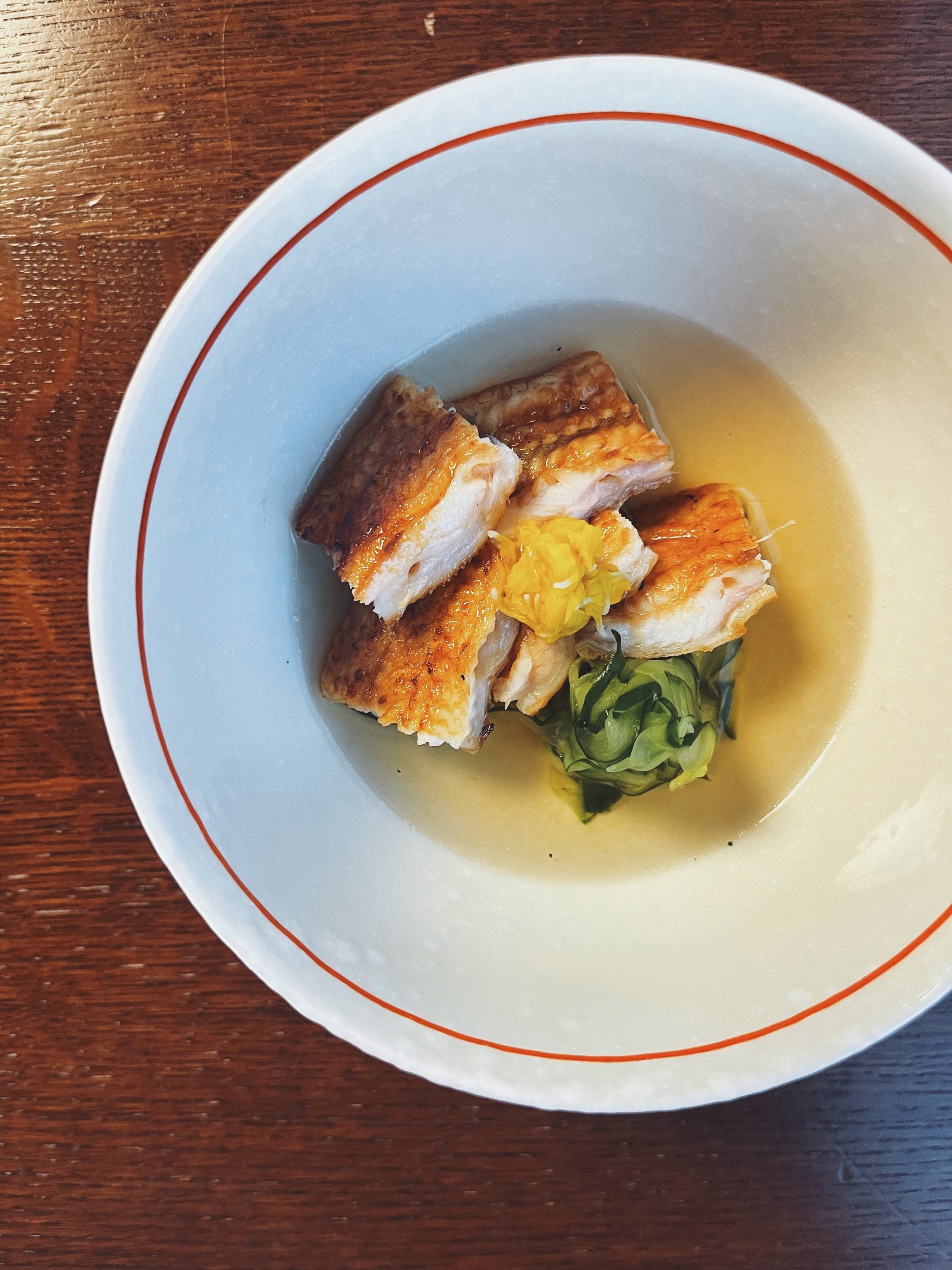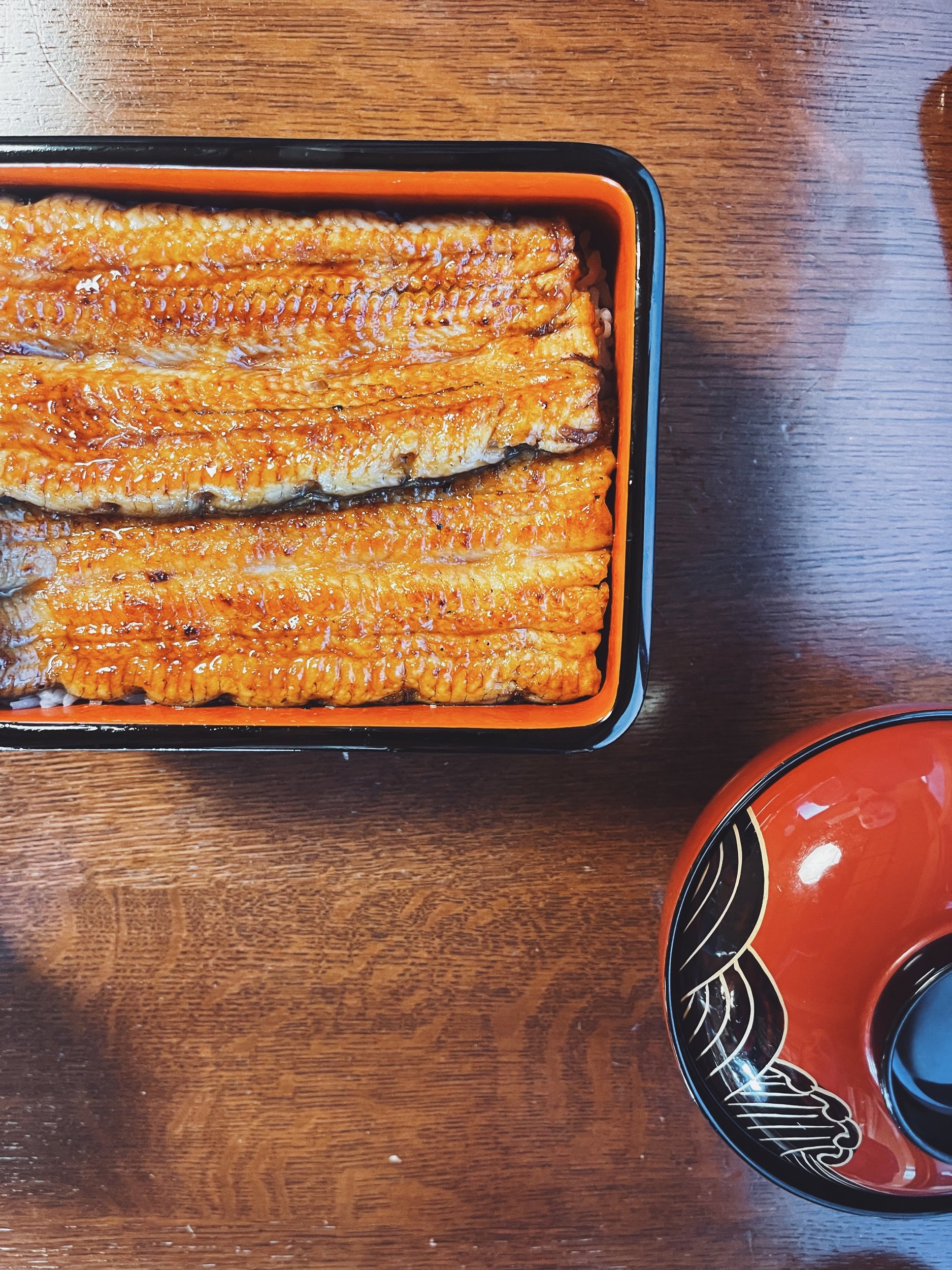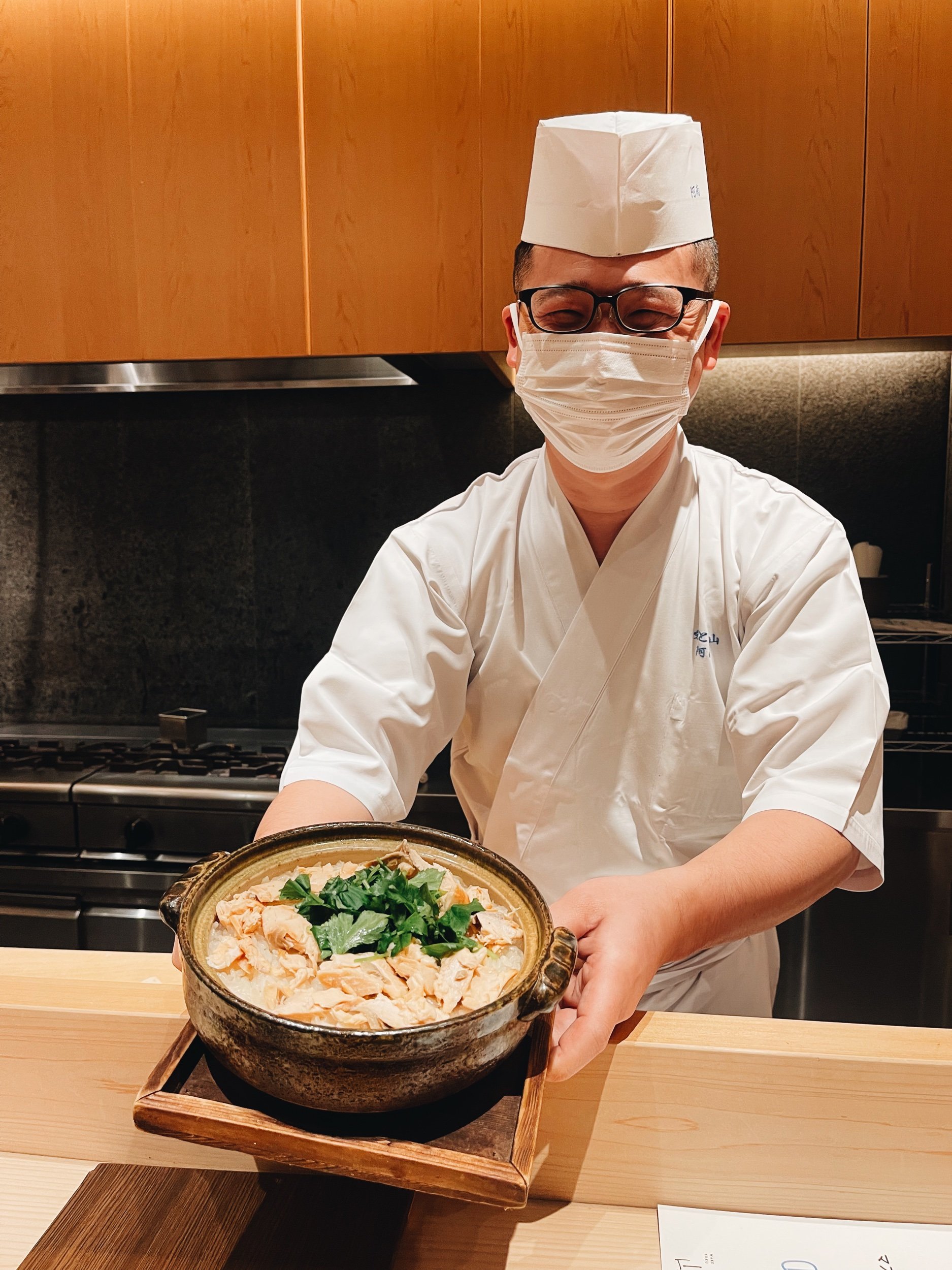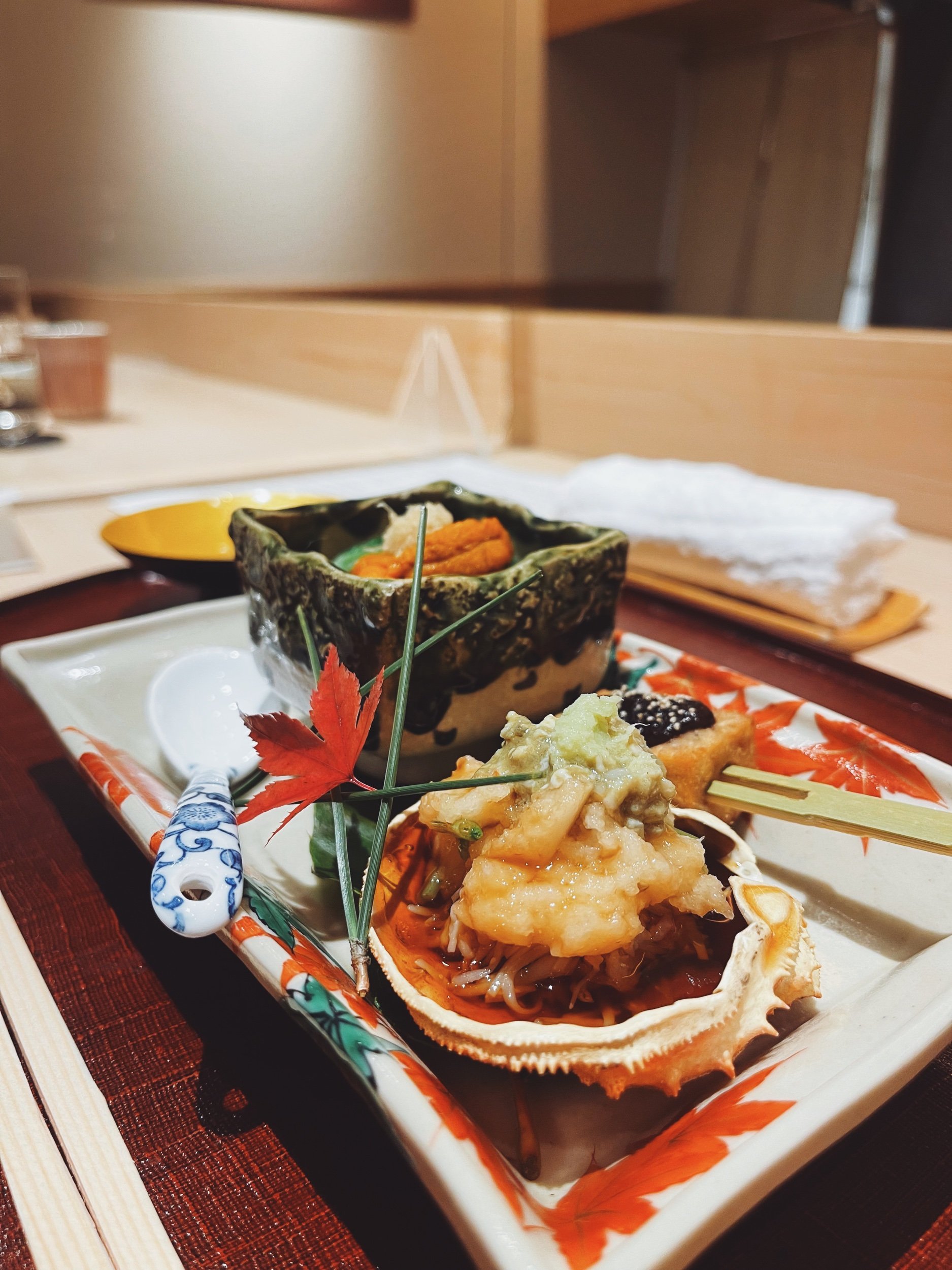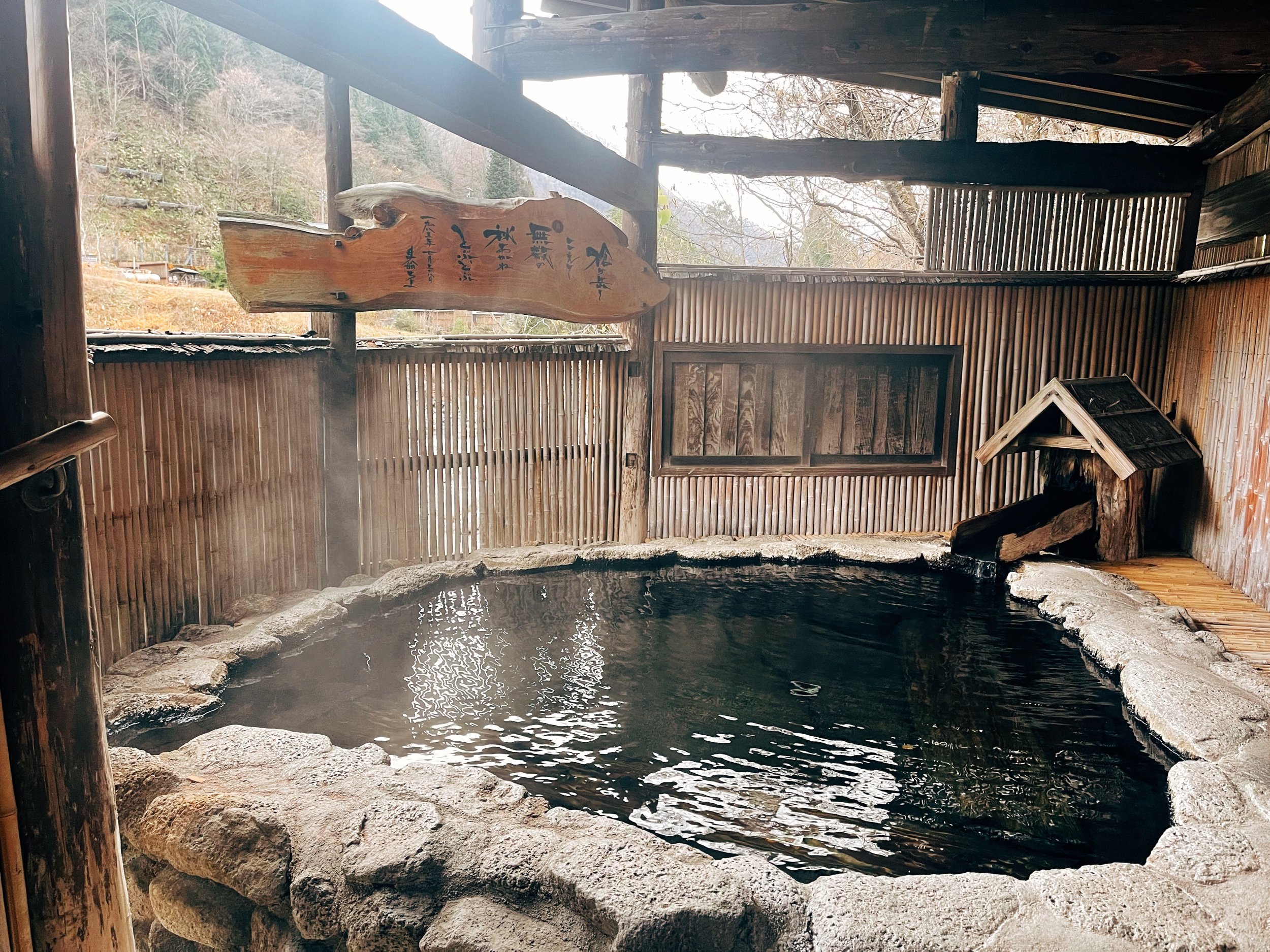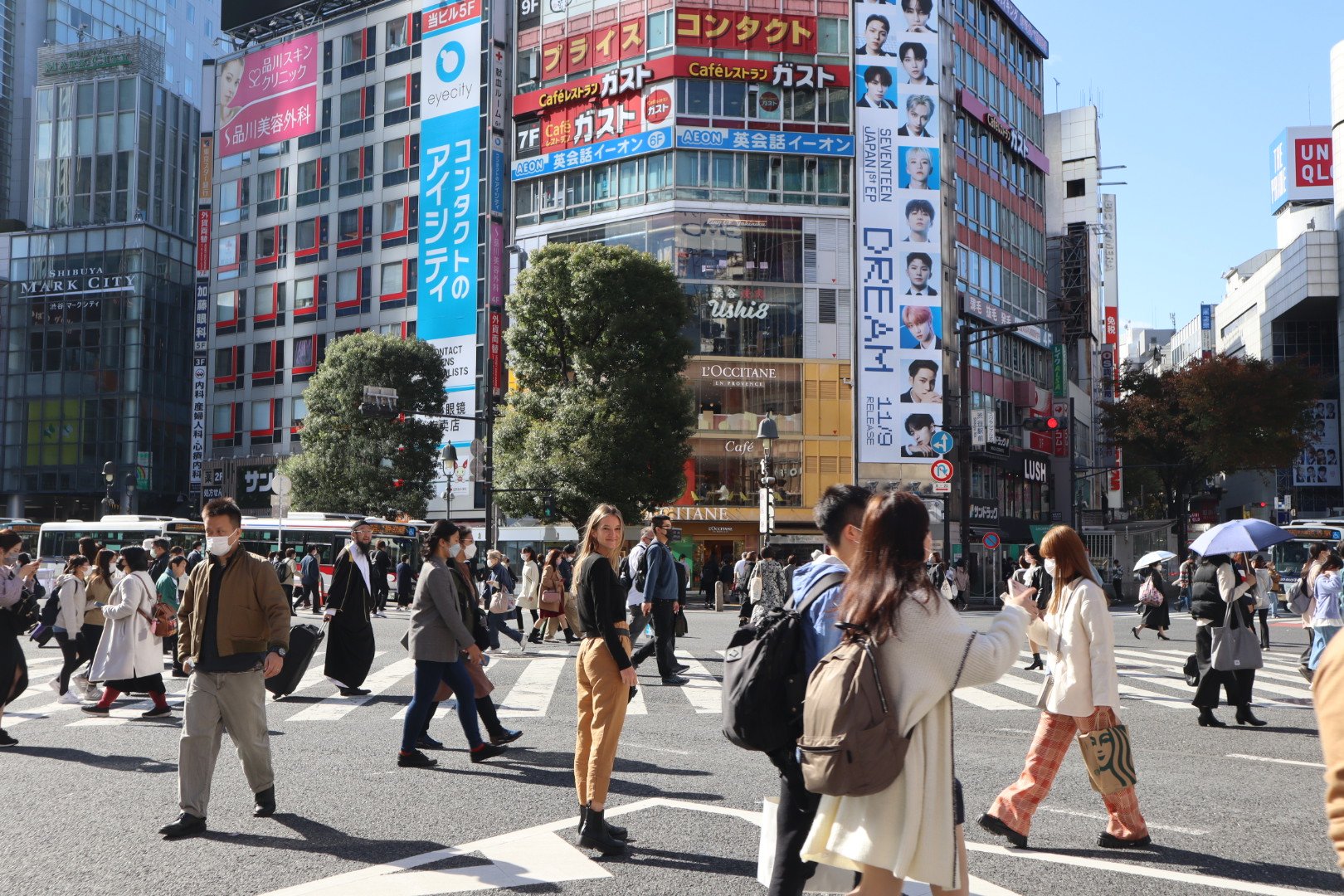Embracing Japanese Food Culture
Tasting the heartbeat of Japan.
While I won’t deny the diversity of flavor found throughout the US, there is something about sinking your teeth into a local dish across the globe that sparks a deeper, purer pleasure. I’ve always been a food enthusiast, but throughout our travels, I was able to fully embrace how remarkable it is to eat cuisine in local regions. And I discovered that the dining experience I’m enamored with is so much more than the plates presented on the table.
Food is about the chef’s connection to the menu; hearing how a recipe has lived through generations provokes a different kind of taste - something more meaningful. It’s about the ambiance; antique art covering the walls and traditional plate ware handcrafted by the local potter bring locality into the flavors. It’s about the historical customs surrounding the dining experience - sitting on floors or eating with your hands - that can feel so foreign yet so inviting. The entire cultural experience around food has completely enthralled me and Japan might be the culmination of this.
The Japanese word 和食 washoku, (和 harmony +食 food) is the social practice of producing, preparing and eating food in Japan. During our journey through the country, we got to observe and feel what this really meant. Tucked inside the increasingly globalized streets that stretch across cities around the country lies a mesmerizing culture and endless stories that are resurrected through food. We encountered many idiosyncrasies in Japanese food culture that drew us closer to the cuisine and brought a deeper level of appreciation. It was in these culinary conventions that captivated us and forever won our hearts … and appetites.
Saying hello!
Within minutes of our arrival to Japan, we were on the hunt for food. We’d done our research and familiarized ourselves with basic Japanese words and restaurant customs that might help us get by. But when slipped our shoes off and ducked into a building decorated with neon displays and foreign markers, we weren’t ready for the effusive welcome we’d receive.
Like a gospel choir, a ringing sound of irasshaimase ricocheted across the dining room. Cooks, servers, hosts and all called out this Japanese phrase which brought us to a standstill. We didn’t learn that phrase in our crash course in Japanese, were we already doing something wrong?? We tried to act cool and proceed to the table we were directed to. No one else seemed to notice so crisis averted. Then we heard it again… and again.. every time we entered a store.
Irasshaimase means welcome to my business and it’s one of many ways the Japanese extend a warm welcome to their guests. From this first encounter, it was evident that shop owners and restaurant staff wanted guests to feel special and take in all the small nuances their distinct culture beams.
Ingredients with a story
From being an integral element at tea ceremonies, to the center stage at social gatherings, food is the the heartbeat of Japan. Each dish, down to the ingredient, has a story that the locals take immense pride in communicating to you through your plate .
Sake, for example, is far from an alcoholic beverage you order to accompany your meal. Religiously, sake serves as a bond to the gods and is one of the most important offerings to Shinto shrines today. Leaving sake barrels at shrines is a method of praying for protection or thanking the gods for a plentiful harvest. Culturally, sake is used at traditional ceremonies, weddings, and personal milestones. It signifies celebration and gratitude. This rice wine also plays an important role in the cuisine as it is used as a building block for broths and marinades. With such grand symbolism and importance in Japanese food culture, drinking sake in a restaurant comes with certain rituals as well. Many a restaurant will serve sake from a masu cup, a small square wooden box that holds the sake glass. The server will pour the sake and allow the liquid to overflow into the masu cup, signifying celebration and abundance. It’s a beverage poured with great happiness and the restaurant staff was exuded a warm enthusiasm as the sake drizzled over the glass - kanpai!
Chef specialties
Japanese cuisine is broken down into an abundance of variety. Popular delicacies like sushi, teriyaki, tempura, and ramen have infiltrated western dining culture and are an integral part of everyone’s eating circuit. However, I can usually find all of these items at a single Japanese restaurant in the states. I could start with a tempura rock shrimp and a toro scallion roll then order the miso cod with a side of crispy rice with spicy tuna as my main - thanks Nobu! When coming to Japan, I immediately learned this would not be the case. Restaurant specialization is a norm where only one style of cuisine could be found on the menu. Tonkatsu - a golden crisp pork fillet that drips with flavor - was only served at a tonkatsu restaurants. Forget the option to select soba or udon noodles at one establishment; thick, chewy udon was only served at udon shops and slippery buckwheat soba only at soba restaurants. And if you need shrimp tempura with your sushi, maybe Japan isn’t for you.
This specialization has everything to do with the role of a chef in Japan’s culture. Chefs are seen as craftsman, or shokunin, in their community and are held with high regard. Most dedicate their lives to mastering their skill. A master chef will often specialize in one style of cuisine for their entire life. Each dish we tried was prepared carefully, on the pursuit to perfection. It felt like we were being casted as extras in Jiro Dreams of Sushi, meal after meal.
Quality at every corner
Quality is a recurring theme in Japanese dining culture. In fact, it makes up the fabric of what a meal should be and partially defines washoku. Unsurprisingly, we found this concept extended outside restaurant walls and and into unassuming places, namely the convenience stores. Quality, even at the lowest price point, is king.
Don’t get me wrong, it was a weird concept for us at first too. Do I trust the food being sold at a convenience store? In the US, the answer is debatable. I’ll take a hard pass on a rotating hot dog that has been lukewarm for the last six hours. But in Japan 7-Eleven, Lawsons, and Family Mart are the three convenient stores that serve purposeful foods with a focus on quality. We were greeted to an array of fresh treats and savory bites that would be the equivalent to a premade meal from Whole Foods. Specific items have even gained global recognition. Katy Perry sang about her love for Karaage-kun fried chicken from Lawsons. And there are endless blog posts covering the debate on the best convenience store onigiri - Japanese rice balls stuffed with simple ingredients like salmon or tuna.
When you walk into a convenience store, you cannot go wrong with your purchase. But always make sure you translate the ingredients as we accidentally bought pig offal on one outing and, contrary to my ‘yes girl’ nature, I was not a fan.
Simple ingredients, big flavors
The beauty in Japanese cuisine lies in simplicity. Instead of overwhelming the palate with heavy sauces and creams, Japanese dishes have a laser focus on natural flavors derived from the ingredients. It’s about enhancing, not masking. Chefs take immense care of these flavors, only pairing ingredients together that harmonize the dining experience.
Dashi broth might be the pinnacle of this cultural observation. This intricate Japanese stock serves to harmonize all ingredients in a given dish. A successful dashi draws out savory flavors and adds complexity. In fact, many say that a chef’s technical skills can be assessed on his or her execution of a dashi broth. Take the miso soup we had at Manten Sushi for example. The ingredients were seemingly simple but this soup transcended to a complex umami flavor bomb. It was a result of that pursuit of perfection that goes into crafting a dashi broth that’s savory but slightly sweet. The addition of baby clams brought out a salty flavor that had our tastebuds swimming through a sea of delight. Soft bites from the tofu provide a playground of texture. Try this at any restaurant in the states and it comes off as an ordinary filler. But in Japan, miso soup was a true dining highlight.
Embracing the queue
Queuing for food is engrained in the Japanese culture, creating order and structure. Each queue was a little different so when we hopped in line for a bite, we never knew what to expect. Some lines - like ramen queues - guaranteed entry into the establishment. You punch your order in at a kiosk and join the snake of people forming from the small establishment door. But others, like the one at Unagi Obana were a entirely different. This restaurant specializes in unagi and had a total of four seatings - two rounds for lunch and two for dinner. Hopeful guests would get in line, approximately an hour early, hoping to make it in for one of these seatings. But like I said, it’s not guaranteed as there are a limited amount of chairs. Luckily, we joined the line and were the last two invited in before the service closed for the day. We got slightly luckier than our Bar Nestor experience in San Sebastián.
At Unagi Obana, we indulged in one item - unagi, or freshwater eel. The broiled eel served on a bed of rice was sticky and sweet. The unagi stew had a vinegar broth that puckered my tastebuds. It might not be the friendliest sea creature, but unagi holds a special place in our hearts and stomachs. It might seem stressful, but these lines are a part of the culture, signifying an establishment of high regard amongst food enthusiasts. We’d endure the queuing risk again and again for another sweet bite of Unagi.
Eating with your eyes
Presentation takes keen importance for chefs in Japan as it aids to the entire artistic experience of the dining culture. Everything from the shape of the food to the size of the ingredients plays a role in building flavor while uniformity, texture, and color aid to the overall appearance. Kaiseki is a preset, multicourse meal that emphasizes seasonal ingredients, meticulous preparation, and artistic presentation. At Waketokuyama in Tokyo we were served dishes that did just that. The meal is deep rooted in tradition and originated as a special meal served during tea ceremonies. It has a distinct menu that usually offers eight courses. The composition of each are exquisite.
One of our main courses - called the kumizakana - incorporated seasonal ingredients that symbolized the harmony of the land and sea. Steamed turnips covered in uni and Japanese parsley were presented at one side of the plate, propped up higher than the other elements of the dish to encapsulate the height of a mountain. Soft shell crab and shrimp potato lay at the base on the other side, representing sea level. To embody the forests and land in between, edible leaves and chives decorated the plate. It almost felt too beautiful to take a spoon to, but we ate each bite with tremendous appreciation for the Chef’s storytelling .
Saying thanks
I will never forget the end of our meal at Waketokuyama in Tokyo. After a beautiful meal that was executed with precision, we stood from our seats at the bar and bowed, offering a sign of appreciation for the experience. The chef delighted us with a genuine smile and bowed as well. While this was common way to end any dining experience in Japan, the following events surpassed any level of gratitude we received. We had only been interacting with the single head chef but slowly an additional flow of people emerged from the kitchen and joined him in the front, all radiating a warm energy. Standing before us was the entire team responsible for our beautiful evening. The chef and his team then began to walk behind us as we left the restaurant. The group of eight accompanied us to the door, formed a long line outside, and harmoniously bowed to us until we were out of sight. Needless to say this left a memorable impression. Chefs radiate immense appreciation for their guests by executing a thoughtful meal and thanking each individual as they leave. Guests reciprocate this same appreciation for the chef as well as the ingredients and care that went into the experience.
Towards the end of our Japan travels, I learned about itadakimasu, a Japanese word that means to ‘humbly receive.’ It’s an expression of gratitude towards the cooks, shopkeepers, farmers, animals, the gods, and anything else that contributed to the culinary experience. The Japanese make is a point to form meaningful relationships in all areas of their lives, including their food. Especially their food. Japan’s food culture is a celebrated and cherished tradition that has given me a deeper understanding for my love and fascination of food around the world.
